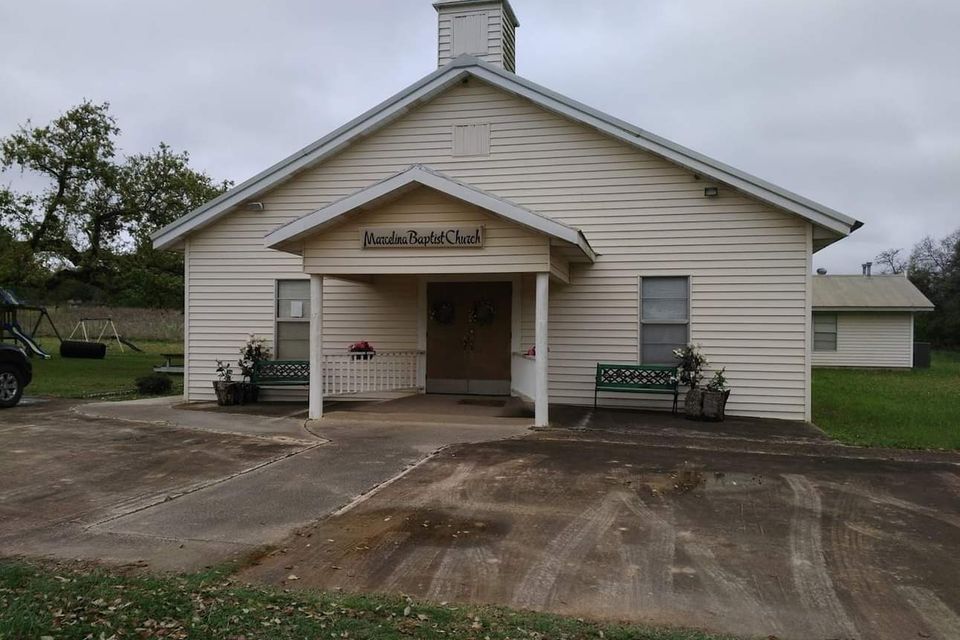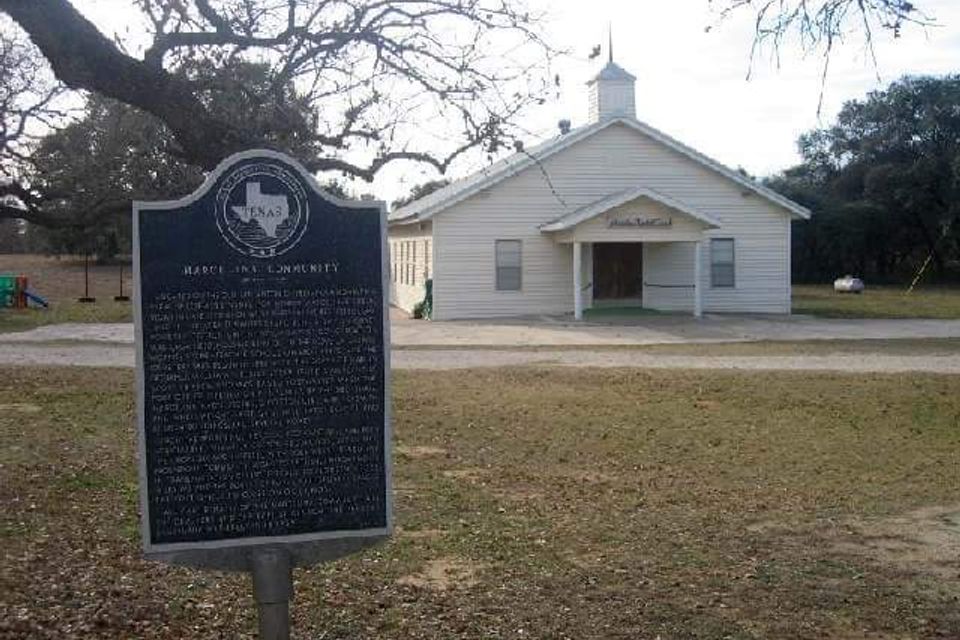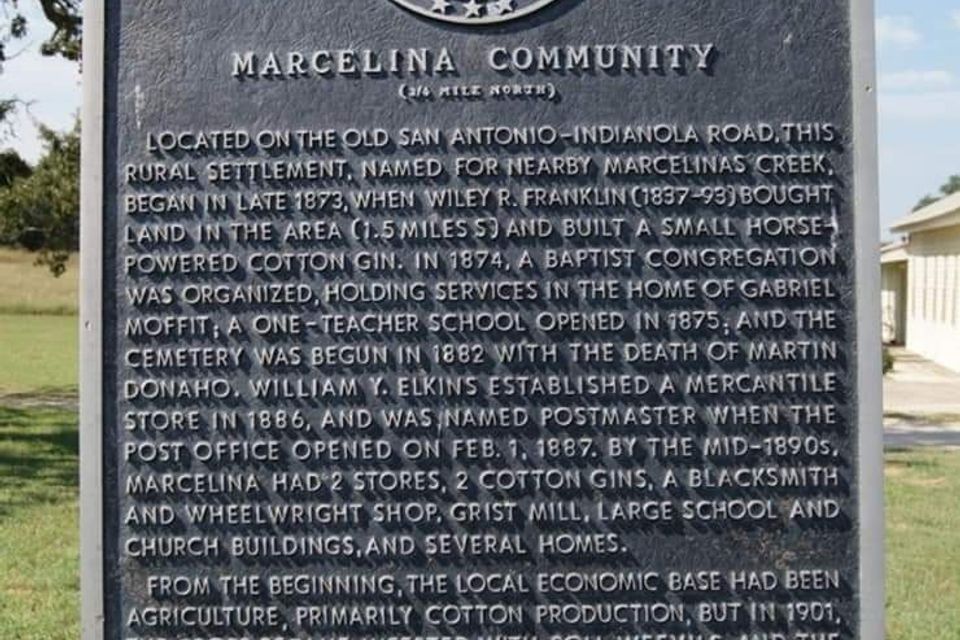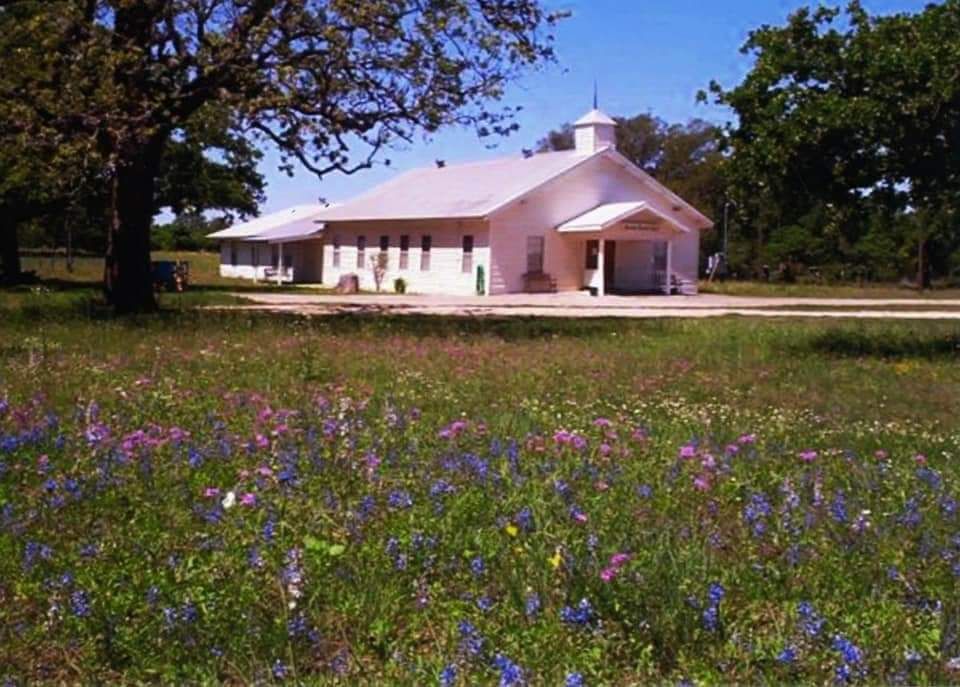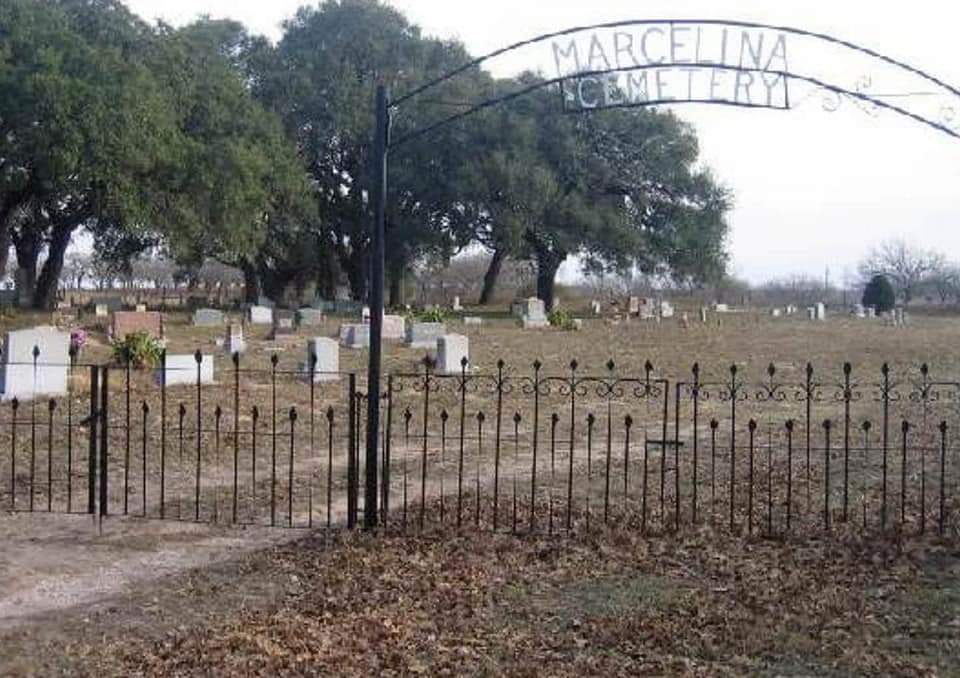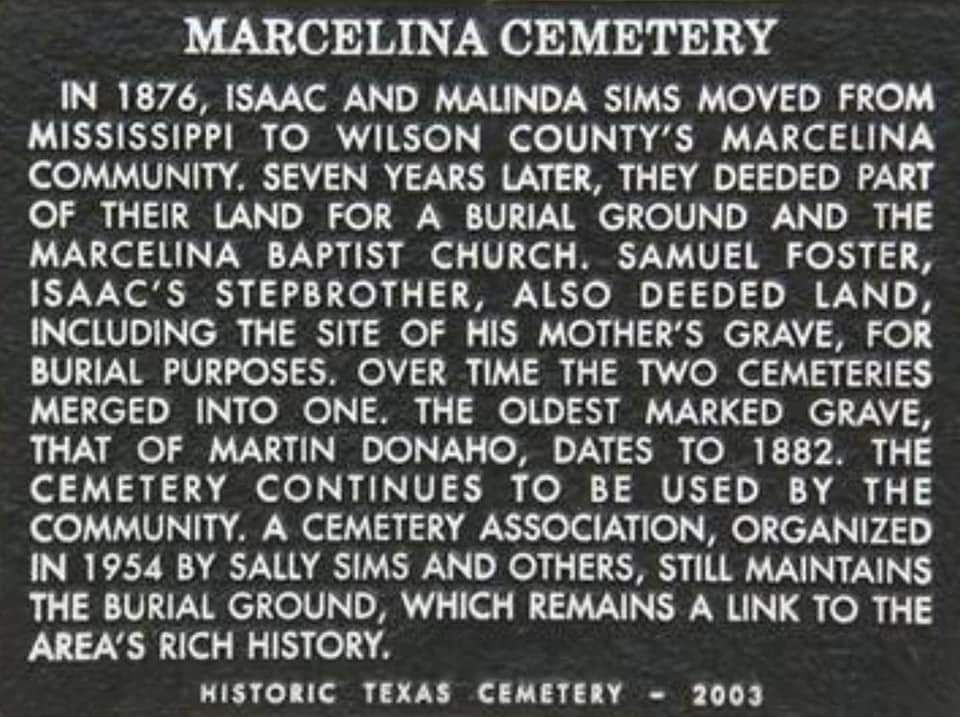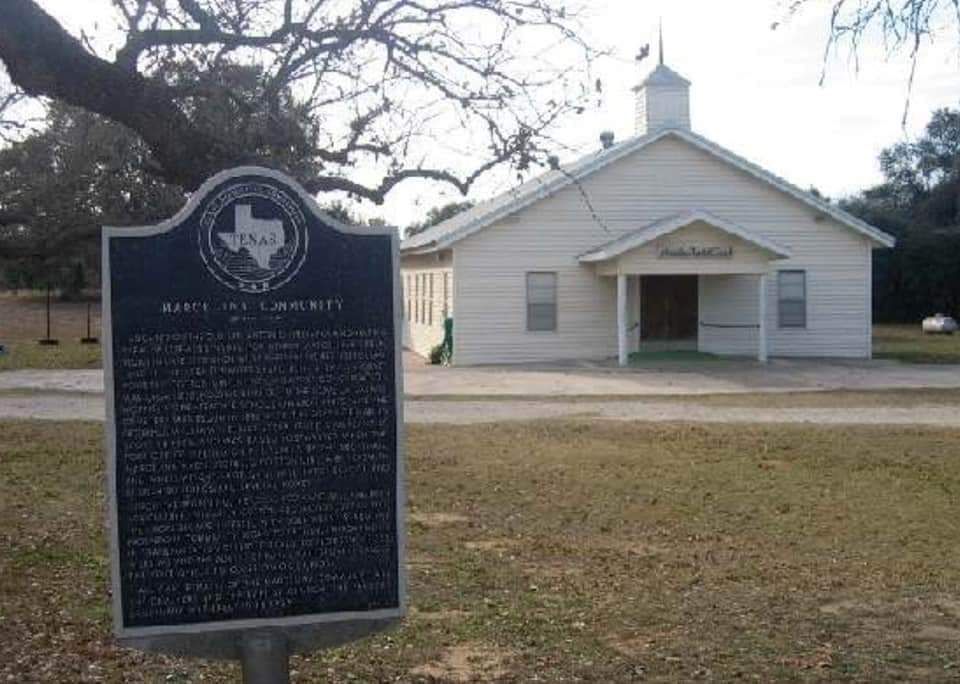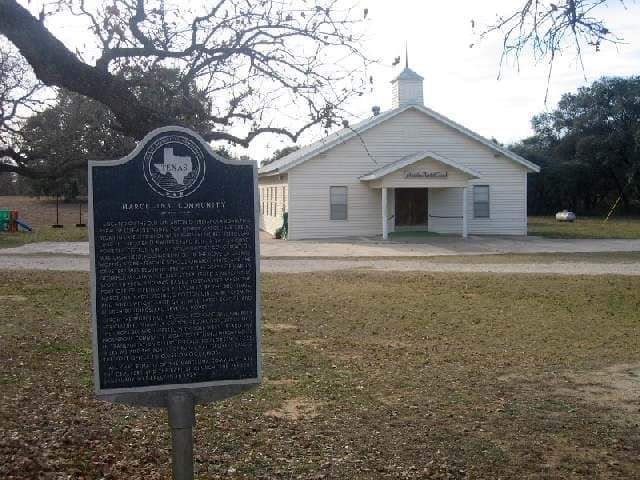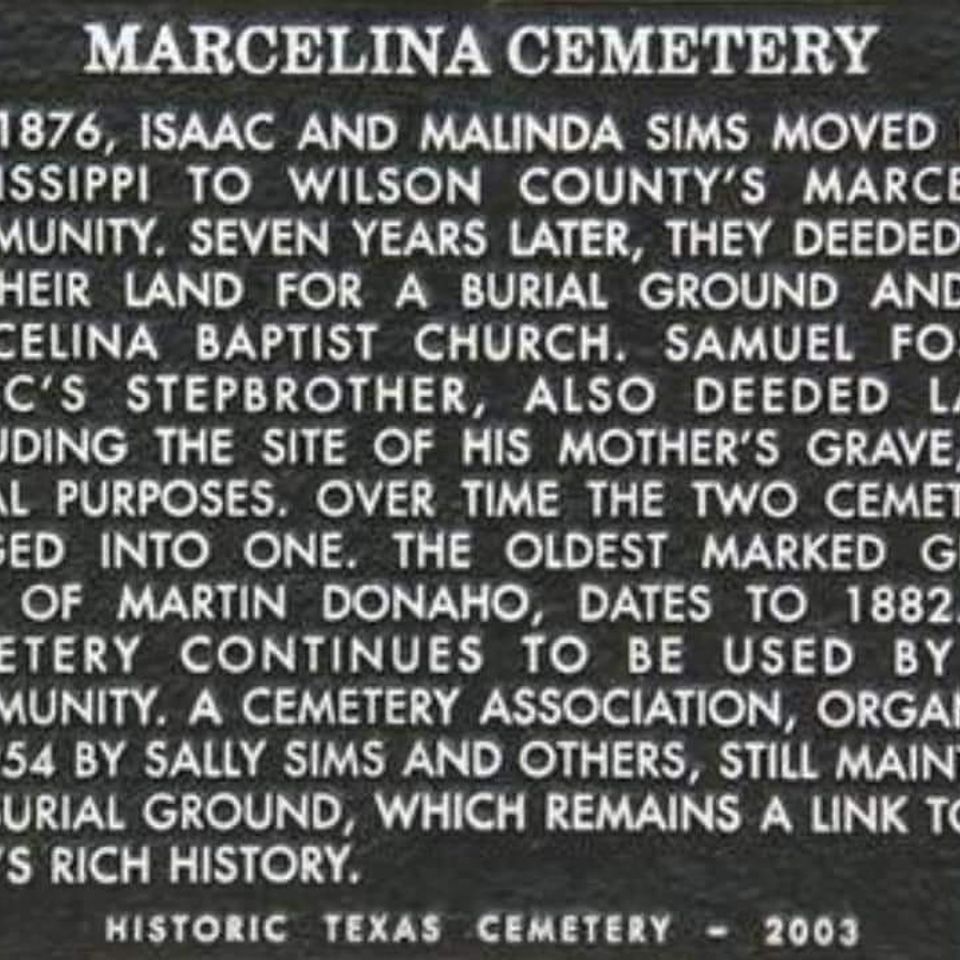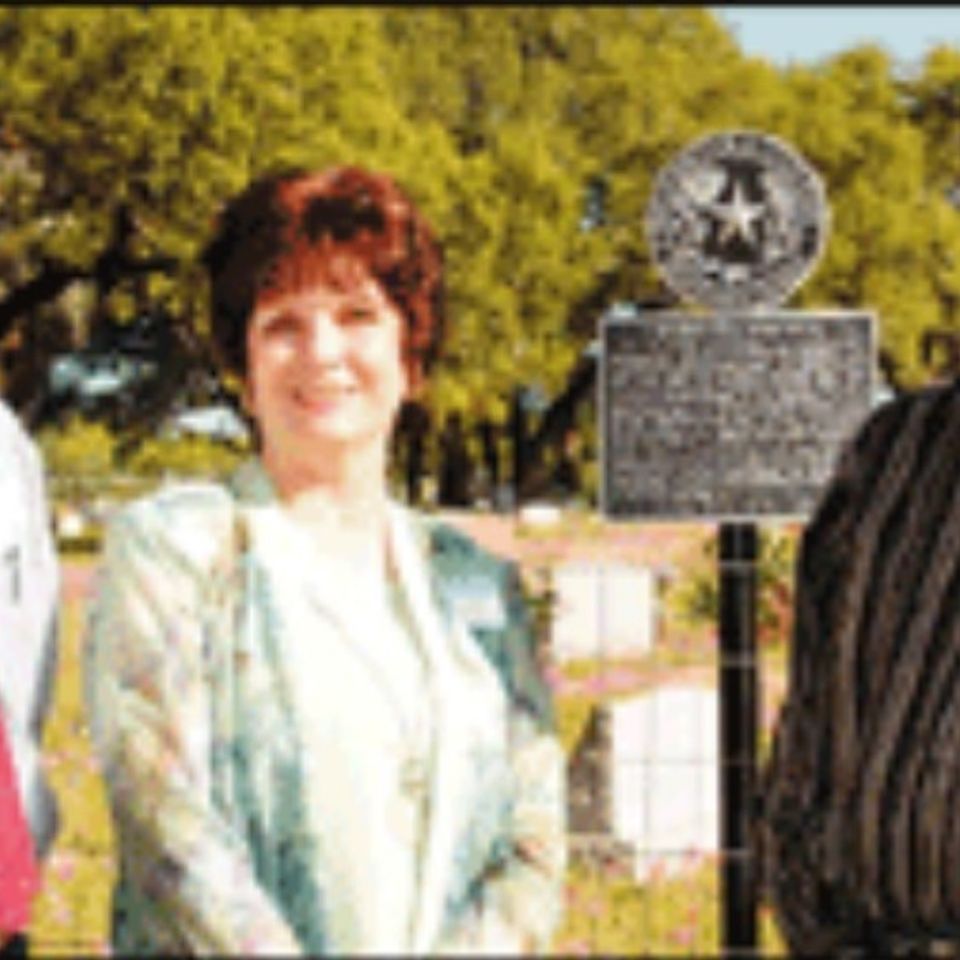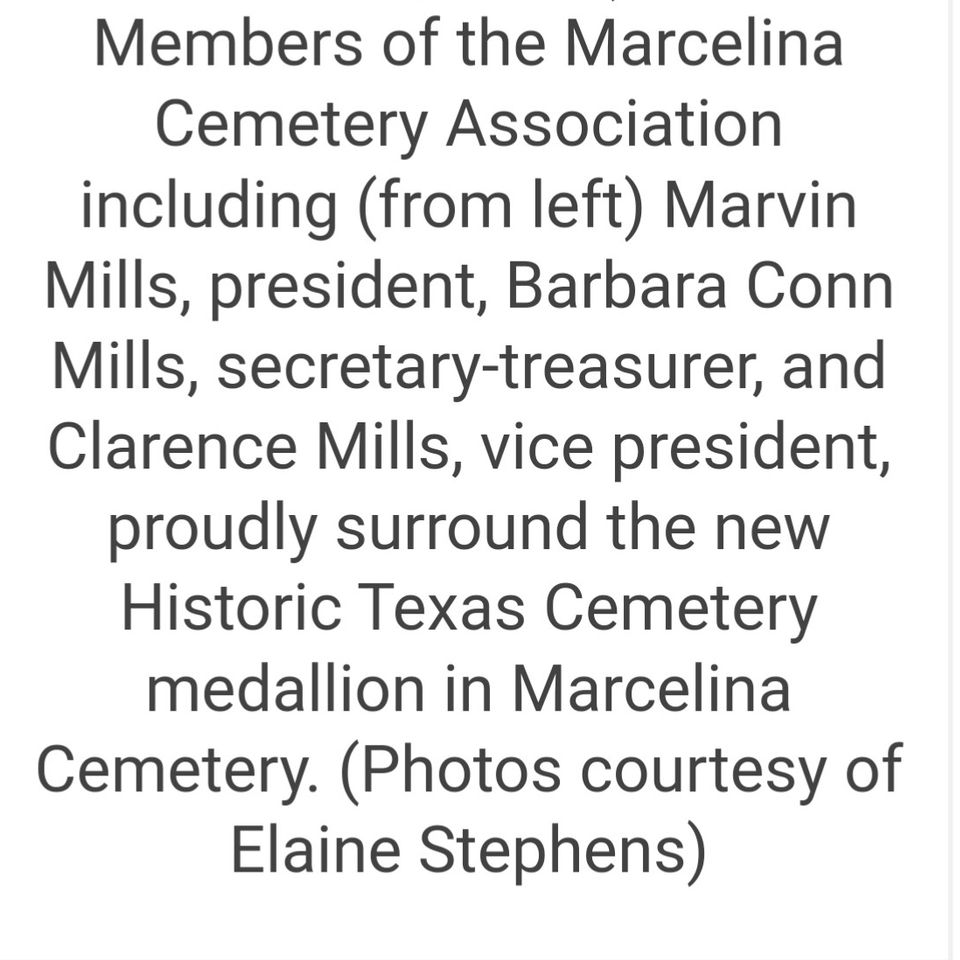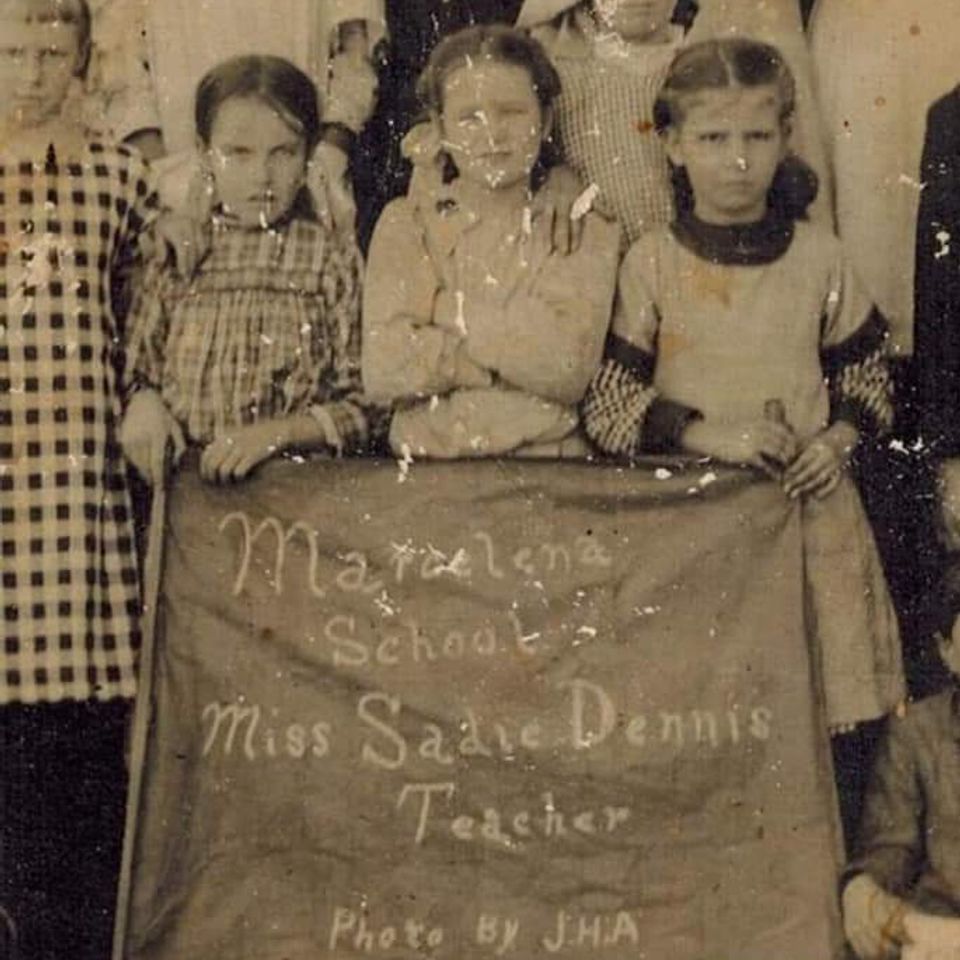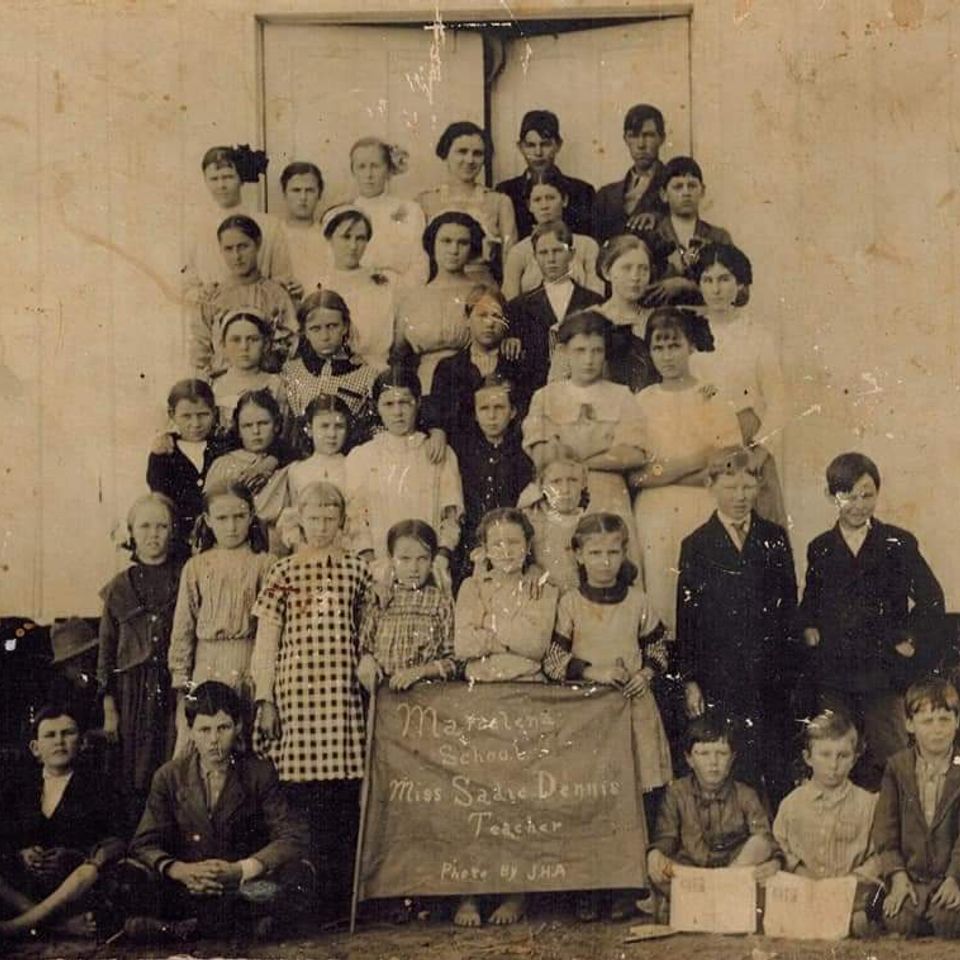by Barbara J. Wood

Marker is symbol of History in Marcelina
Wilson County News, April 20, 2005
Special to the Wilson County News from Elaine Mazurek Stephens
On April 2, 2005, in the heart of Wilson County Texas, an officially inscribed Historic Texas Cemetery medallion was unveiled amidst tombstones and bluebonnets. The new spring weather was showing off and the wildflowers decorated every grave. Family and friends in the tiny historic community off S.H. 97 gathered at the Marcelina Baptist Church to dedicate the memorial to their loved ones.
Marvin Mills, president of the Marcelina Cemetery Association, welcomed families, friends, and guests. The Rev. Olen Wilson, minister of the small church, gave the invocation.
Gene Maeckel, chairman of the Wilson County Historical Society, spoke of the hard work it takes to obtain one of the markers.
"The Texas Historical Marker program is one of the best in the country," Maeckel said. "It takes careful work and dedication to obtain a historical marker."
Wilson County Judge Marvin Quinney, who was the guest speaker, praised cemetery association members for their hard work and dedication to preserving and protecting the heritage of their community.
During the ceremony, a history of the Marcelina Cemetery was given by association secretary-treasurer, Barbara Conn Mills. Lauren and Marvin Mills acknowledged the many people who made it possible for the marker to become a reality. The visitors gave thanks for their loved ones, then walked to the cemetery, only a few steps from the simple, white church. The solemn unveiling was done by J.G. Sims, a descendant of the founders. Following an outdoor benediction by the Rev. Wilson, homemade refreshments were offered in the fellowship hall of the church.
"Historic Texas cemetery markers are important, not only because they show how much a community values a landmark site, but also because they interpret the history for future generations," said Dan K. Utley, chief historian with the Texas Historical Commission. "Cemeteries are unfortunately among our most vulnerable cultural resources; they often contain information about the past that cannot be found anywhere else. In that sense, they are like libraries on a landscape."
The Marcelina Cemetery marker from the Texas Historical Commission reads, "In 1876, Isaac and Malinda Sims moved from Mississippi to Wilson County's Marcelina Community. Seven years later, they deeded part of their land for a burial ground and the Marcelina Baptist Church. Samuel Foster, Isaac's stepbrother, also deeded land, including the site of his mother's grave, for burial purposes. Over time, the two cemeteries merged into one. The oldest marked grave, that of Martin Donaho, dates to 1882. The cemetery continues to be used by the community. A cemetery association, organized in 1954 by Sally Sims and others, still maintains the burial ground, which remains a link to the area's rich history."
Near the lone picnic table under the old oak trees in the churchyard, the great-great-grandchildren played, unaware of the significance of the day, which is an important part of their family's history. Someday they will become curious about their community and thankful for the lives and history recorded on the durable, aluminum marker, which stands at the final resting places of their ancestors. Until then, every spring, the bluebonnets will celebrate in their memory and honor.
*************************
The Marcelina Baptist Church, 510 Cr 404, Floresville,
Texas, a little church with six pews on each side and forty-five members. They have small Sunday School classrooms that were later added onto the church building.


